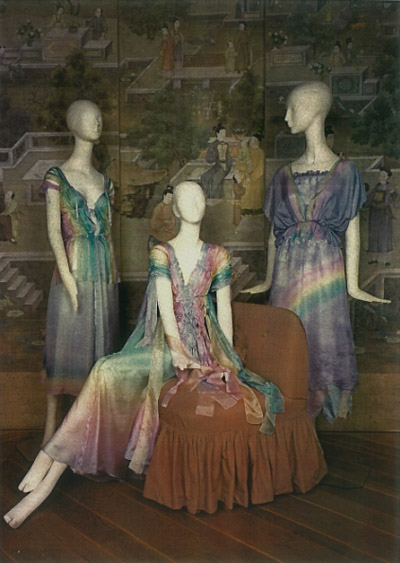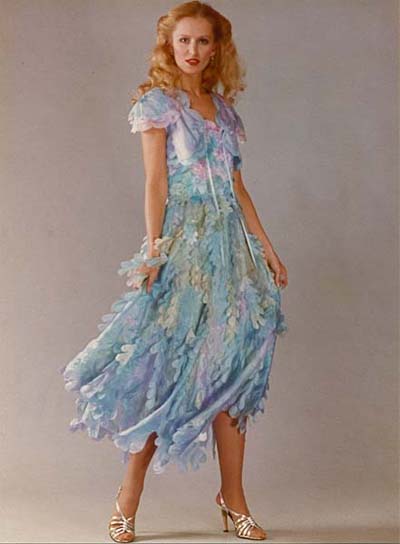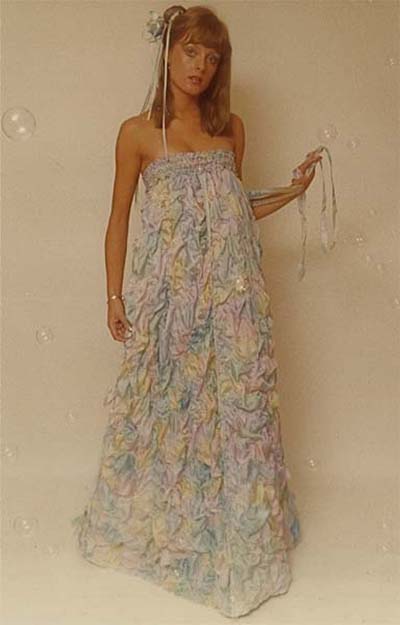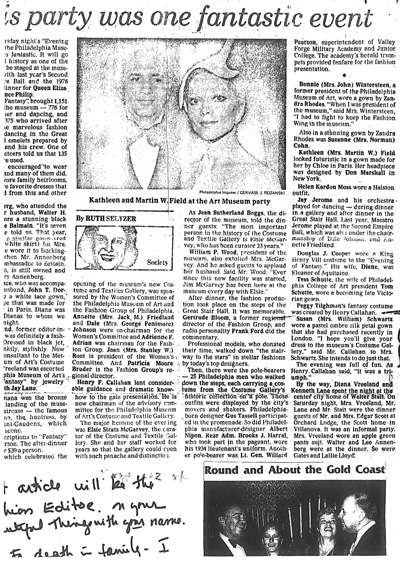A thrilling celebration of the imagination, my project Fashion and Fairytale is also explained on it’s own website.

Fairytale’ ballgown complete with a fairytale stitched with gold thread into its skirt. V&A exhibition 2012, ‘British glamour since 1950
The inspiration for my fashion designs came about from my deep love of nature. As a gamekeeper’s daughter who grew up in the woods and fields, I was aware at a very early age of a profound connection to the wildness and beauty all around me. This naturally awakened my imagination as well as my sensitivity to various nature creatures and fairy beings, who showed me where to find such wondrous things as six-leaved clovers, lost treasure and the very first spring flowers.
It is this refined sensibility to beauty and my all-embracing mystical connection to the whole, that has informed every creative impulse of my life, and was a major influence on my years in fashion. Consequently, I had to develop unique dyeing techniques to create the colours and effects I wanted. It also entailed inventing ever new and elaborate methods of construction or stitching, especially for such fragile fabric as silk habotai that had never been used for clothing before.
My vision obviously worked, as buyers often told me that although they could not afford my designs, they would come to see my collections just t o cheer themselves up. Fortunately, there were enough affluent stars and celebrities around the world to sustain a flourishing business in the seventies and eighties. In fact, one of my favourite buyers, who always had a fragrant flower tied to her finger , and who owned the most exquisite boutique in Rodeo Drive Los Angeles, where many of them shopped, was so inspired by my designs that she used to write a poem to go with her chosen pieces.
With such an appreciative market for my work, how could I not be inspired to give full reign to my prolific imagination – something I feel incredibly privileged to have had the opportunity to do, even if it was cut short by illness.








































